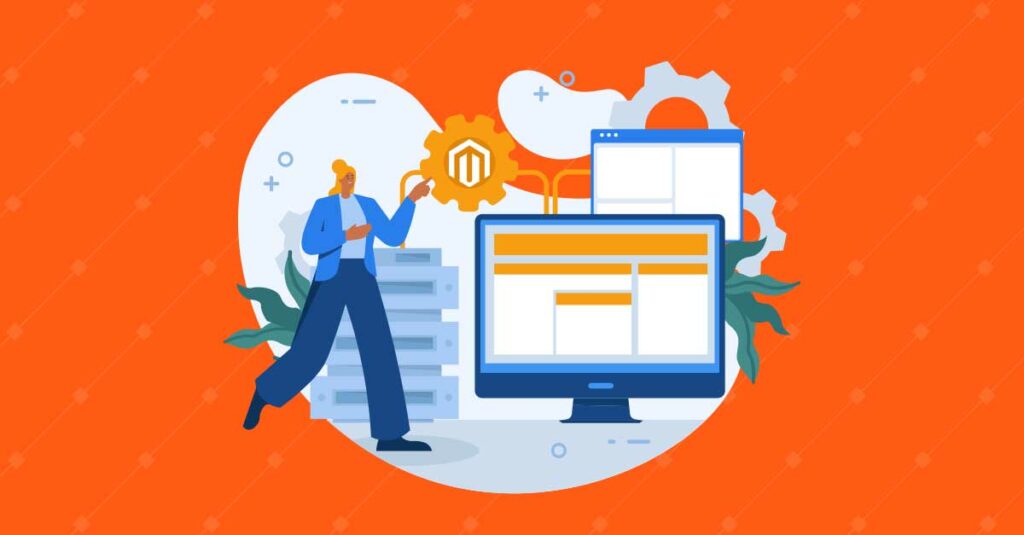B2B eCommerce sales are anticipated to witness a CAGR of 20.2% between 2023 and 2030. In this competitive, yet thriving environment, B2B eCommerce companies should ensure that their application experiences are seamless to stand apart and grow. After all, this is directly associated with increased brand affinity and improved customer retention.
However, despite the rapid adoption of advanced technologies, B2B eCommerce companies still have significant room for improvement in their application experiences.
In this article, we will discuss some strategies for B2B eCommerce companies to deliver superior application experiences for their customers. But before we get into the nitty-gritty of those strategies, let’s uncover the nuances of the current B2B eCommerce landscape.
Understanding the B2B eCommerce Landscape & Its Requirements
The B2B eCommerce space is expected to achieve sales of $2 trillion in 2023. Amid this soaring market, it’s essential that eCommerce enterprises follow suit with the steps below:
First off, explore the unique needs and challenges of B2B customers. Unlike B2C customers, B2B buyers often look for granular functionalities, personalized pricing, and streamlined procurement processes.
Second, recognize the pivotal role of web and mobile applications in meeting these specific B2B requirements. These applications serve as powerful tools to enhance efficiency, facilitate seamless transactions, and enable convenient access to product information and catalogs.
Finally, understand why delivering superior experiences emphasizes the need to build trust and foster customer loyalty.
By facilitating intuitive interfaces, personalized features, and efficient workflows, eCommerce companies can elevate the application experiences for their customers and drive long-term success in the dynamic B2B landscape.
To that end, let’s explore the strategies to deliver superior application experiences.
1. Design a Seamless User Interface
According to a study conducted by Forrester Research, a well-crafted user interface has the potential to increase your website’s conversion rate by 200%, while an enhanced UX design could result in conversion rates as high as 400%.
That said, one key aspect is reducing complexity, i.e., streamlining the user experience by removing unnecessary steps and reducing cognitive load.
For example, B2B eCommerce companies can:
- Improve the search experiences by ensuring all products have accurate and clear descriptions, titles, keywords, images, videos, and other important product details.
- Embrace responsive design, which ensures that the application adapts effortlessly to different devices and screen sizes and provides a consistent and optimized experience for all users.
- Incorporate visual storytelling techniques that can captivate users and enhance their engagement with the application.
2. Personalize Catalogs (Tailoring Experiences to Perfection)
One of the crucial aspects of providing a seamless interface experience is harnessing customer insights to drive personalization. According to Gartner, B2B sellers who integrate personalization into their digital commerce strategies can expect revenue growth of up to 15%.
By leveraging data and analytics, companies can gain valuable information about individual preferences and behaviors, enabling them to tailor the catalog and product offerings to perfection.
Furthermore, empowering B2B buyers to configure their own experience helps them to customize the application according to their specific needs and preferences. This flexibility enhances customer satisfaction and fosters a sense of ownership.
3. Streamline Transactions for Efficiency & Performance Optimization
In addition to providing a seamless interface, companies should consider streamlining the transactional process to ensure efficiency. B2B transactions involve larger order sizes and longer sales cycles than B2C transactions due to complex negotiations and the involvement of multiple stakeholders from different functions.
Furthermore, performance optimization techniques can improve customer experiences by optimizing content according to the customer’s location, bandwidth, and device. In line with optimization, B2B eCommerce companies must focus on the following areas to nurture a better user experience:
- Simplifying the checkout processes: While designing a B2B e-commerce solution, adding transaction-related functionality is a must.
- Accelerating procurement: B2B e-commerce companies can expedite the procurement experience by utilizing automation.
- Streamlining approval workflows: Ease of use is critical, and this holds true for both B2B buyers and sellers. Streamlining the approval workflow enables streamlined business processes, reducing costs and improving operational efficiency.
- Optimizing loading times: Buyers, in general, are growing more impatient with slower loading times. Therefore, B2B eCommerce companies need to be proactive in ensuring the application loads in less than 3 seconds.
4. Fortify the Digital Frontier (Nurturing Security and Trust)
According to a Verizon report, corporate espionage accounts for approximately 3.6% of B2B breaches. To stay competitive and protect customers from such data breaches, B2B eCommerce companies must prioritize cybersecurity protocol investments.
They can use the below strategies to overcome these security concerns:
- Ensure that your software and systems are regularly updated and patched to prevent the exploitation of any unpatched vulnerabilities.
- Safeguard your website by implementing industry best practices to ensure a secure eCommerce platform.
- Provide comprehensive training to employees, enabling them to identify and avoid social engineering tactics employed by hackers.
- Employ solid passwords and enable two-factor authentication to enhance the security of user accounts.
- Utilize firewalls and reliable antivirus software to shield against malware and viruses.
- Conduct regular monitoring and updates of your website’s security measures to proactively prevent potential attacks.
- Utilize encryption methods to safeguard sensitive data during transmission.
- Adhere to the recommended best practices for your specific eCommerce architecture and platform.
How Composable Commerce Can Help in Realizing Success with the Above Strategies?
As per Gartner’s insights, businesses that prioritize composable commerce are poised to outperform their competitors by a significant margin, with potential gains of up to 80% through the swift integration of new features.
What sets composable ecosystems apart is their remarkable adaptability, scalability, and extensive customization capabilities. Composable commerce empowers merchants to innovate independently, surpassing platform constraints. As a result, these ecosystems are characterized by enhanced speed, efficiency, and agility in keeping up with technological advancements.
Favorably, transitioning to composable commerce is not as daunting or time-consuming as one might assume. By leveraging the right modular solution and partnering with industry leaders such as Ignitiv, a gradual, component-by-component implementation becomes a feasible reality.
Partner with us and lead the way in the experience economy, providing seamless, engaging, and successful digital interactions that drive business growth and customer satisfaction. Connect with our experts here.








